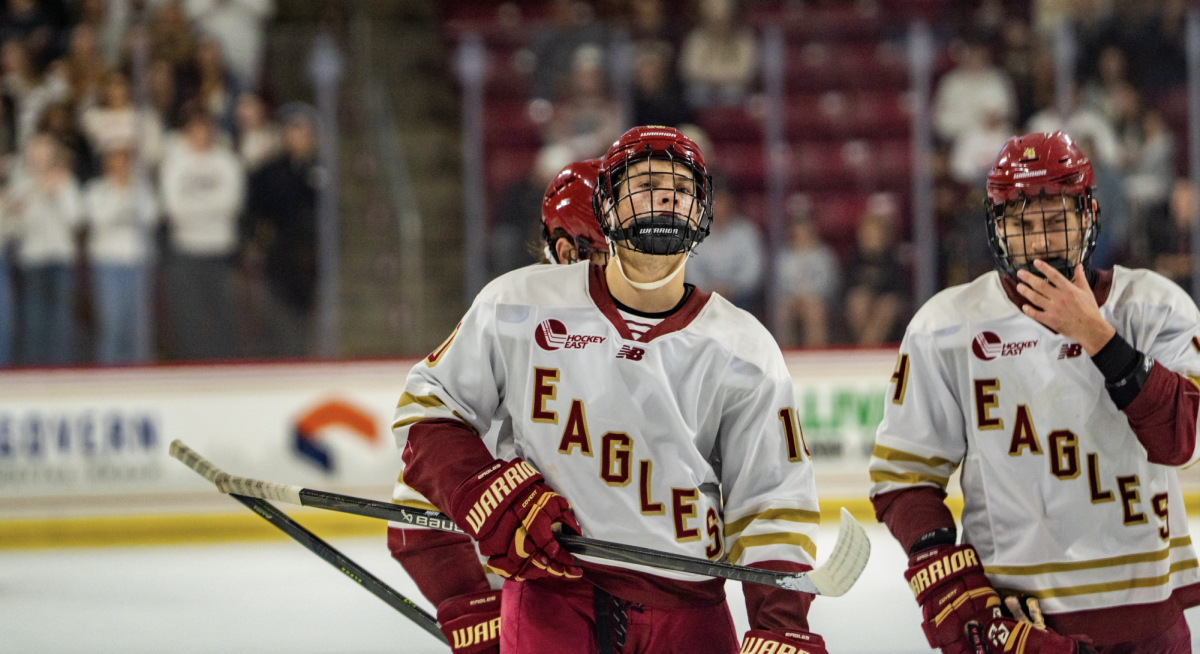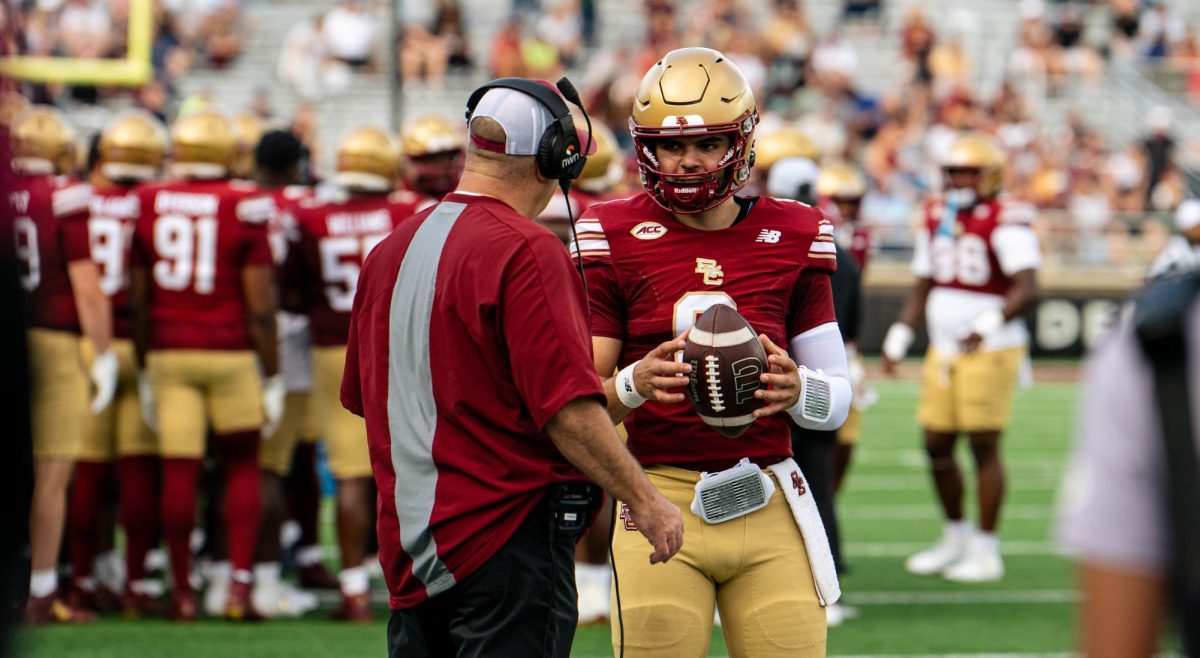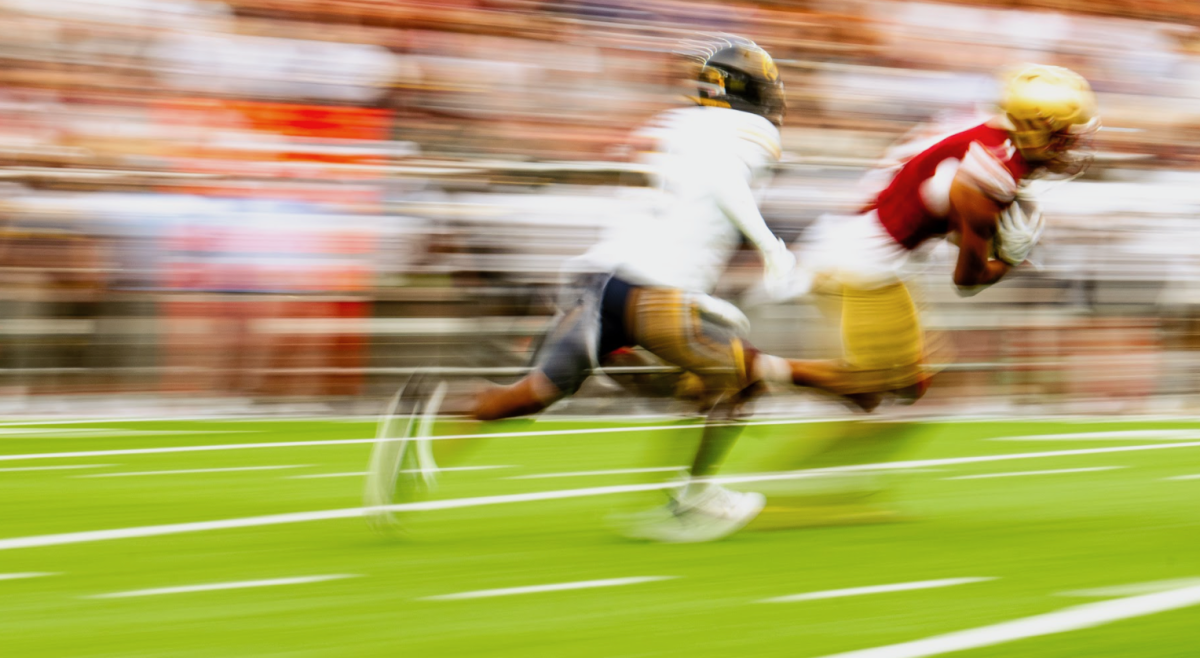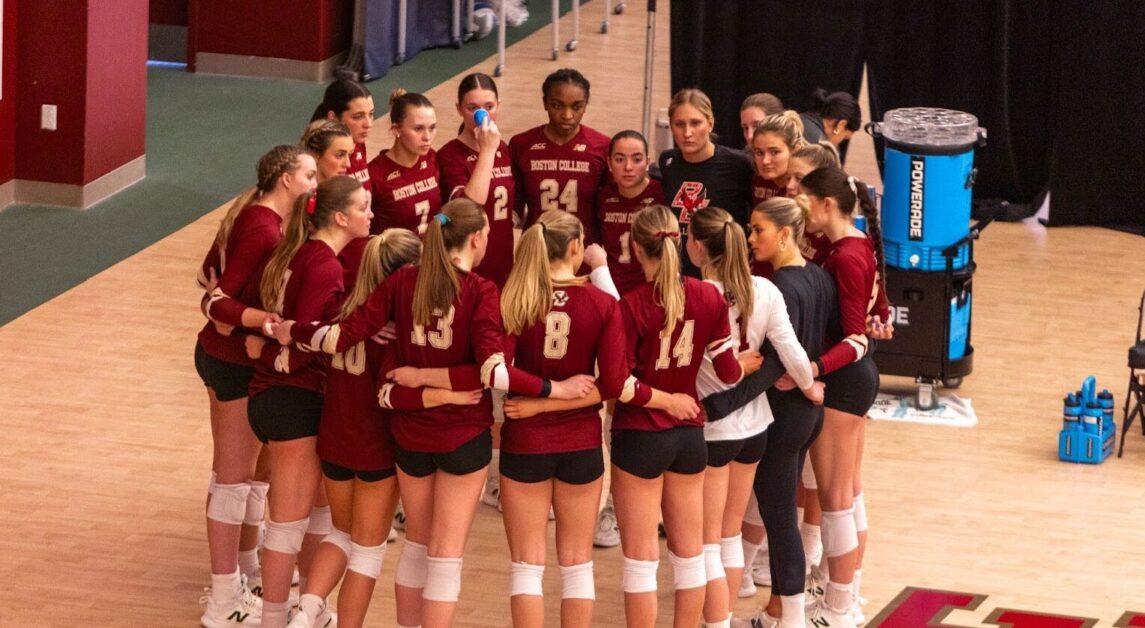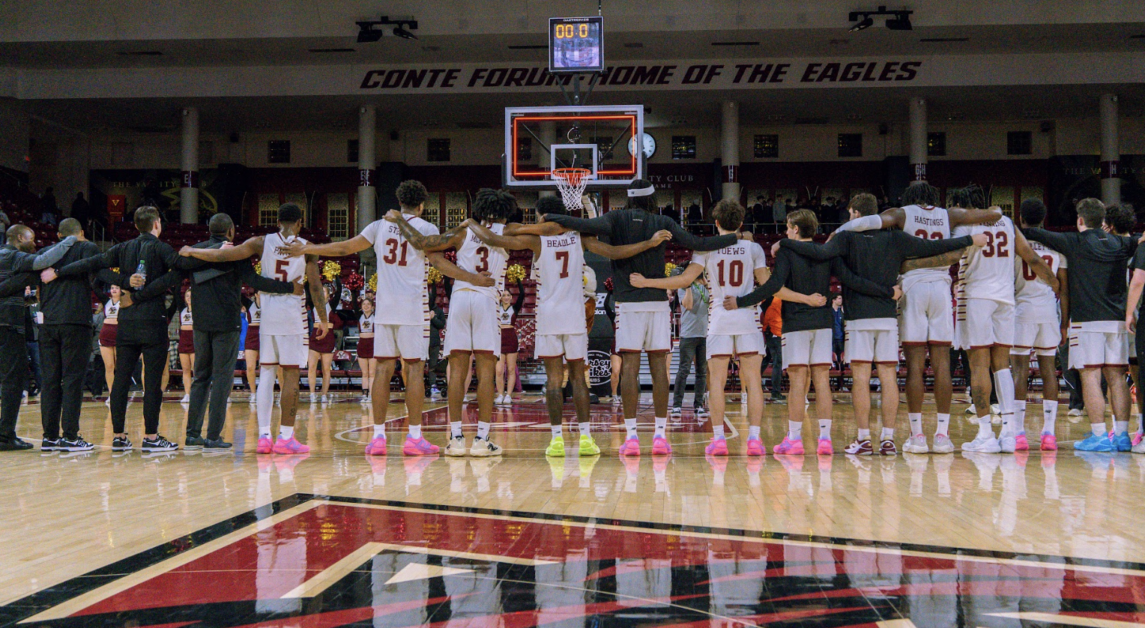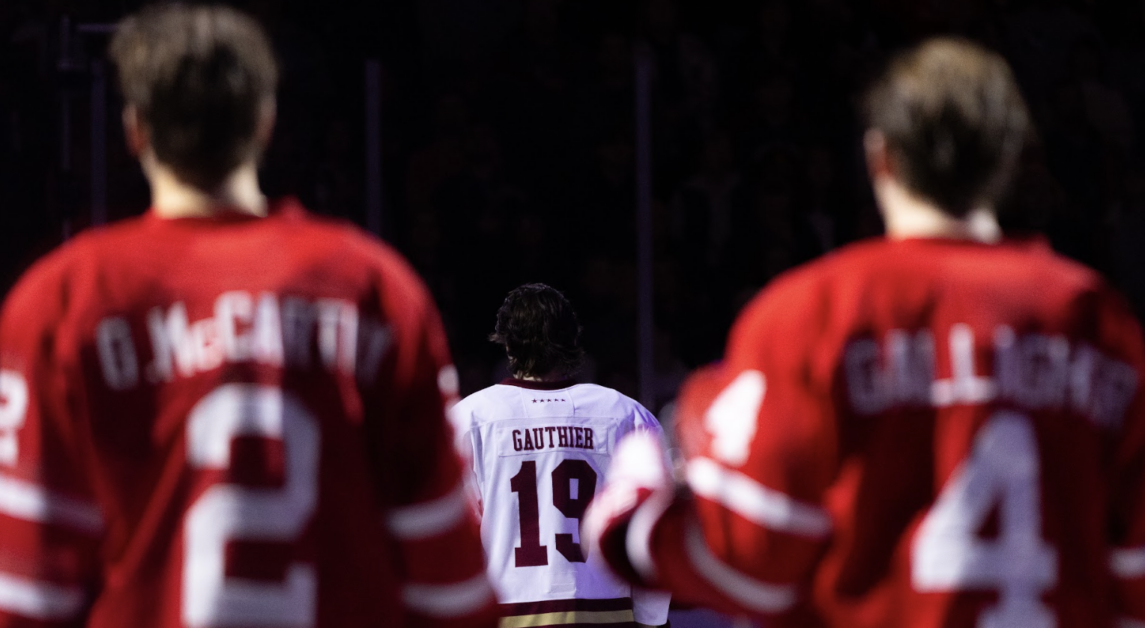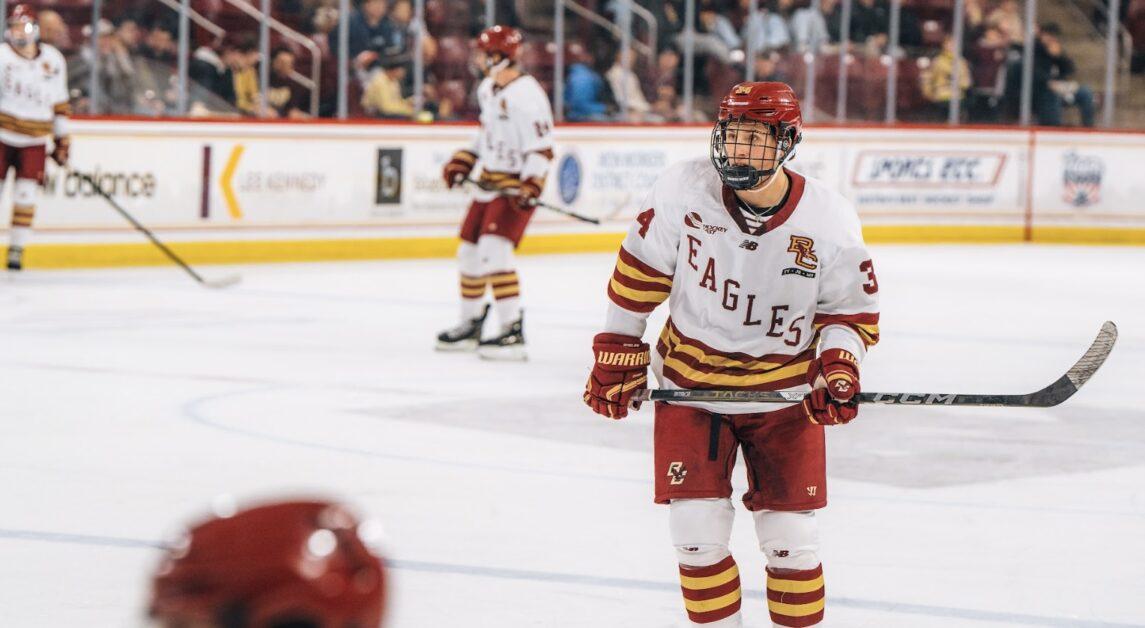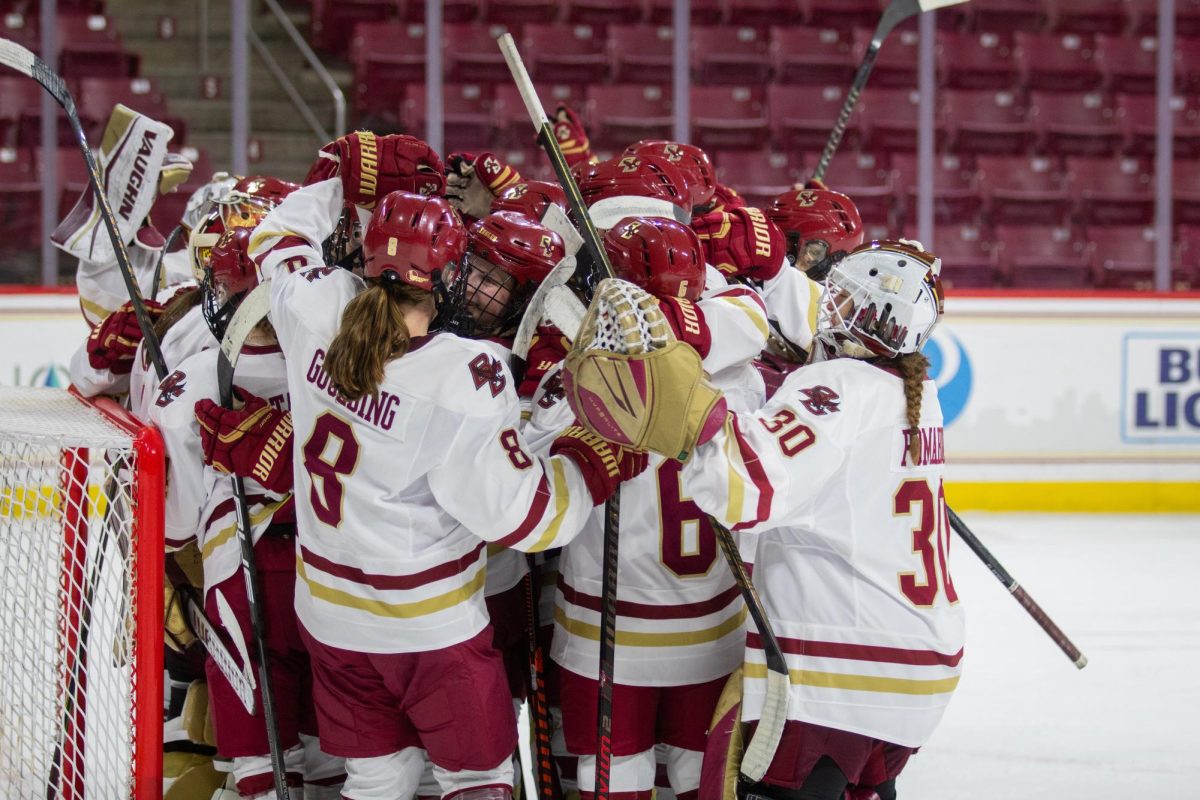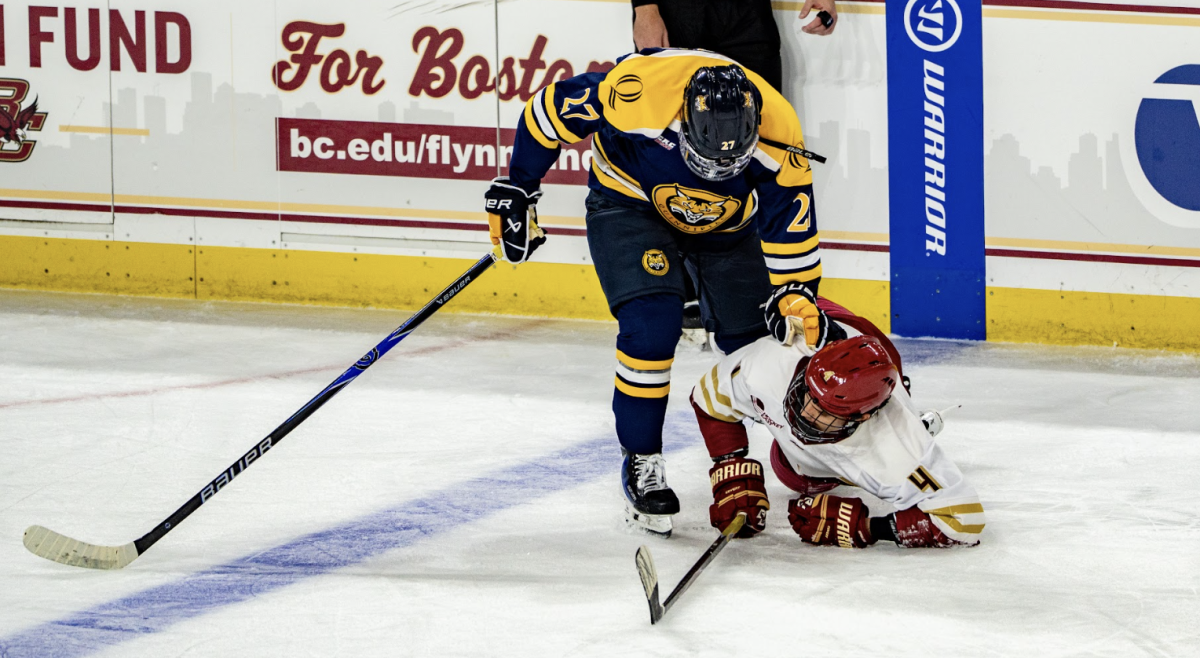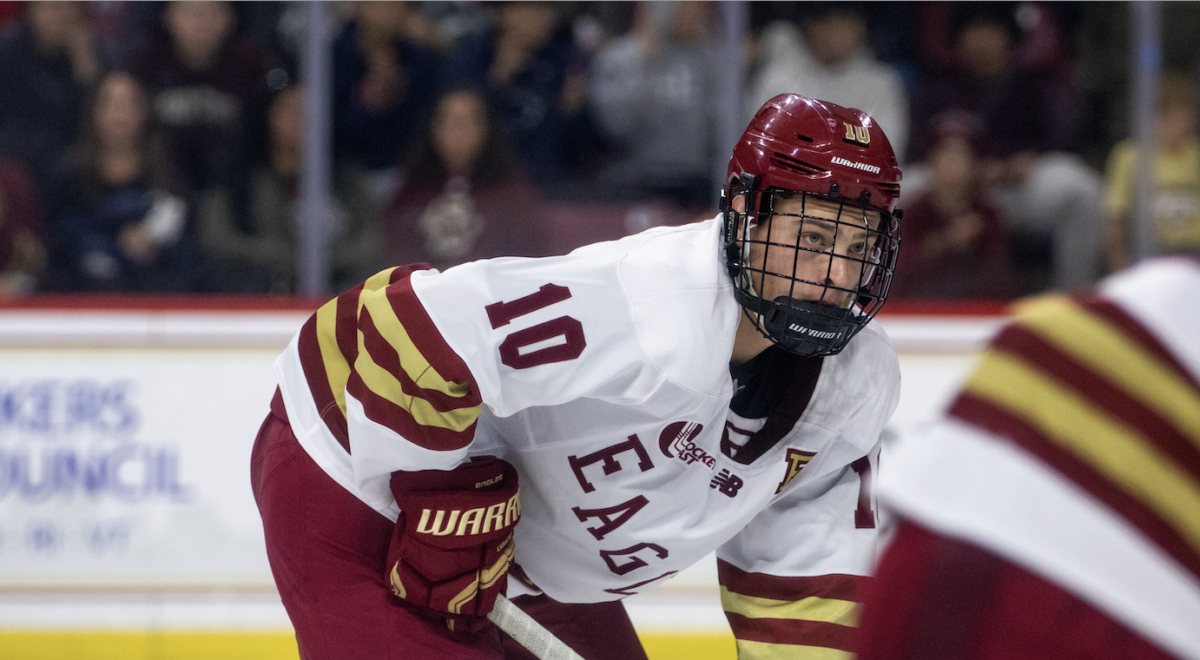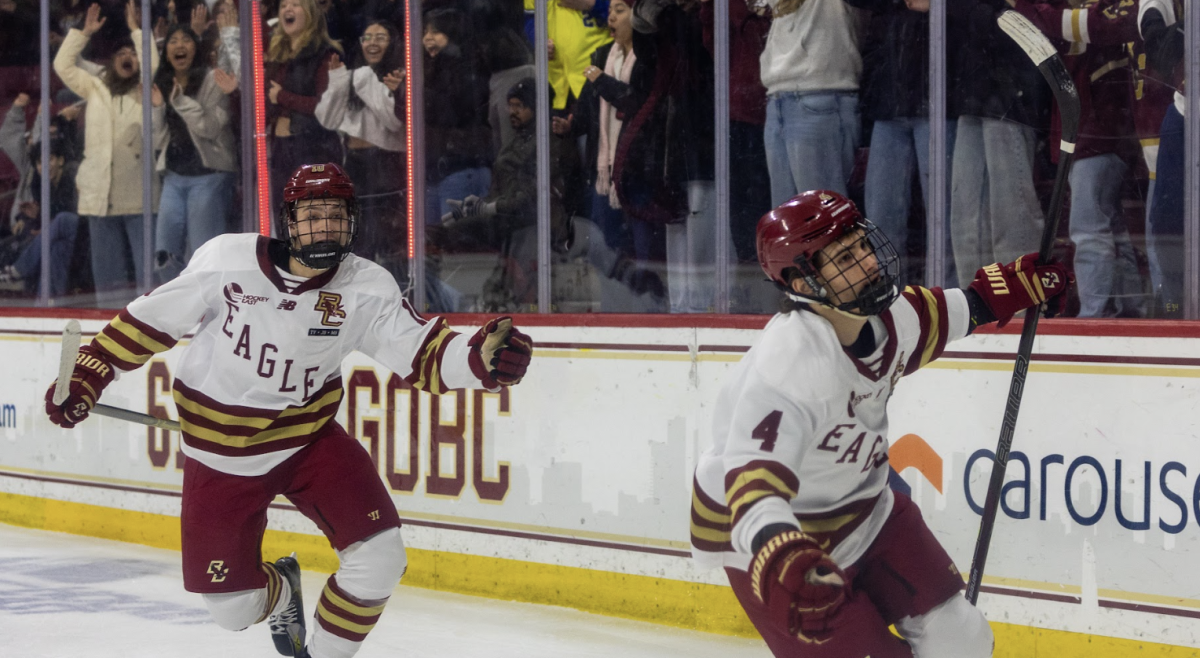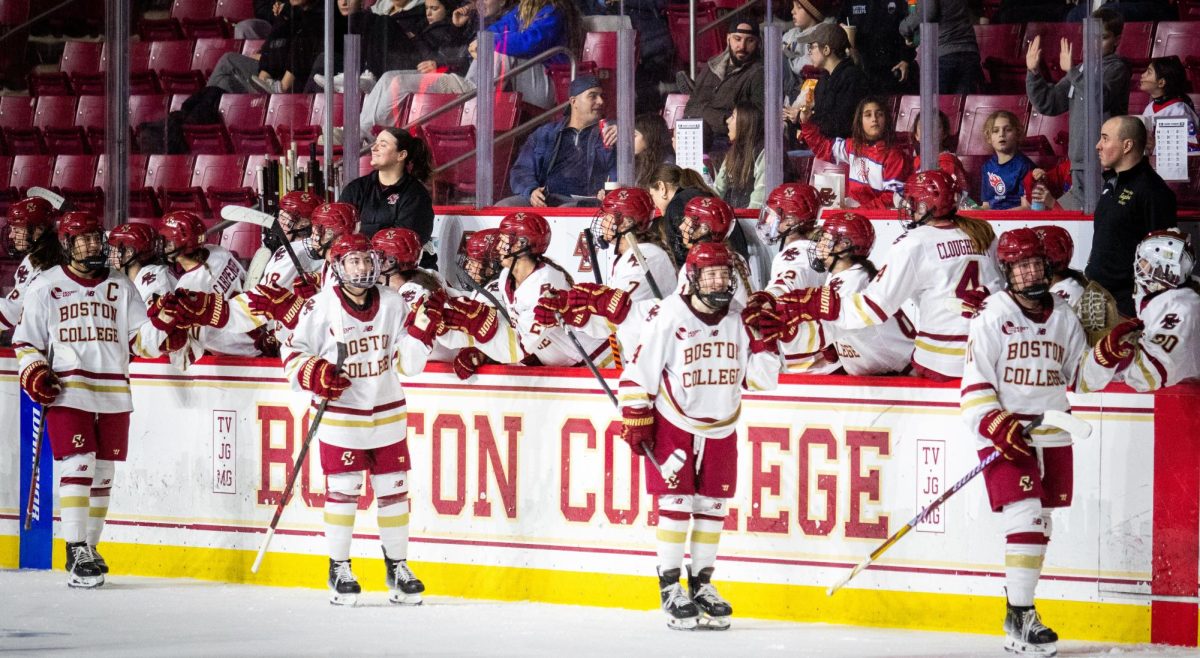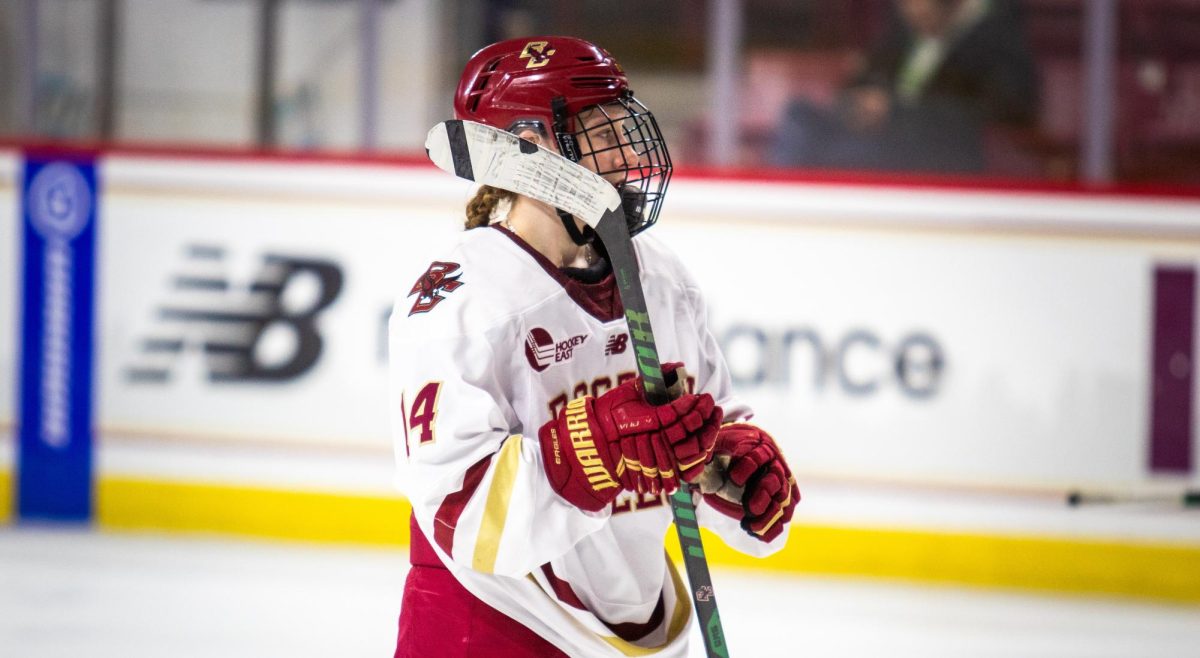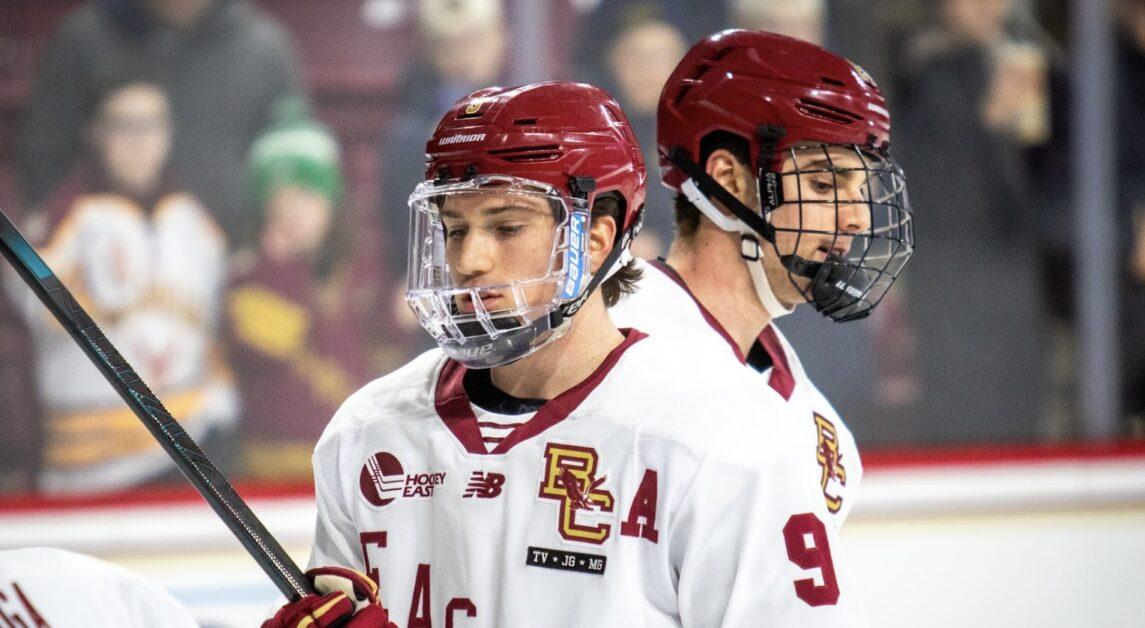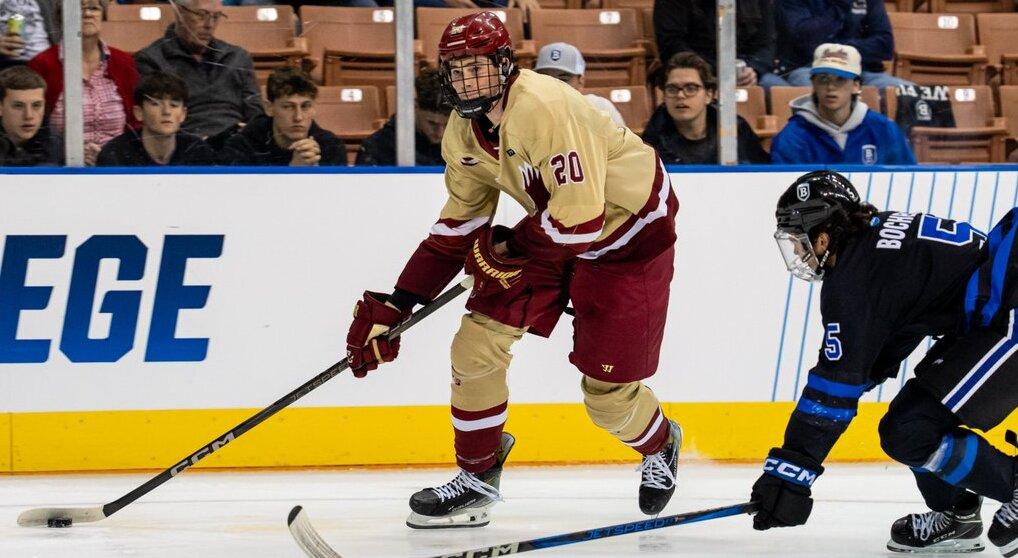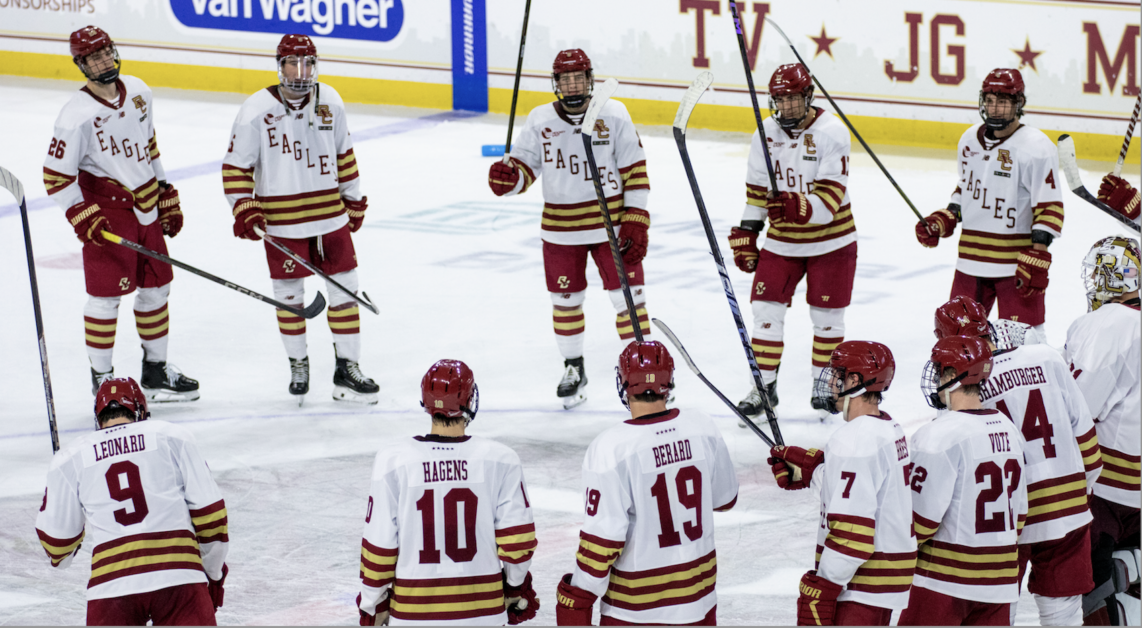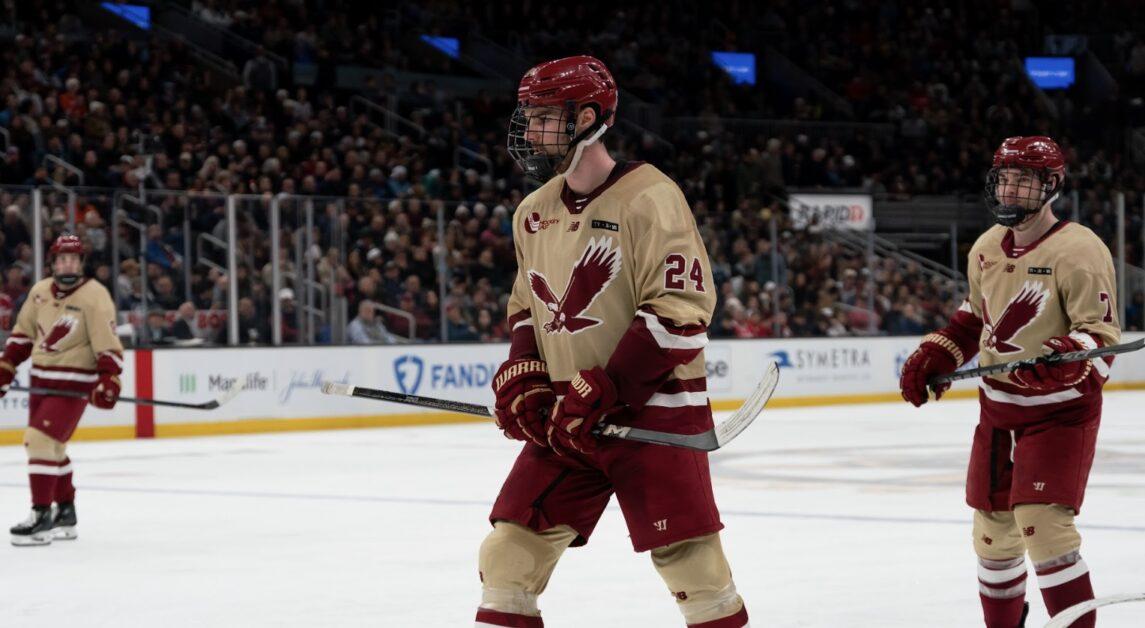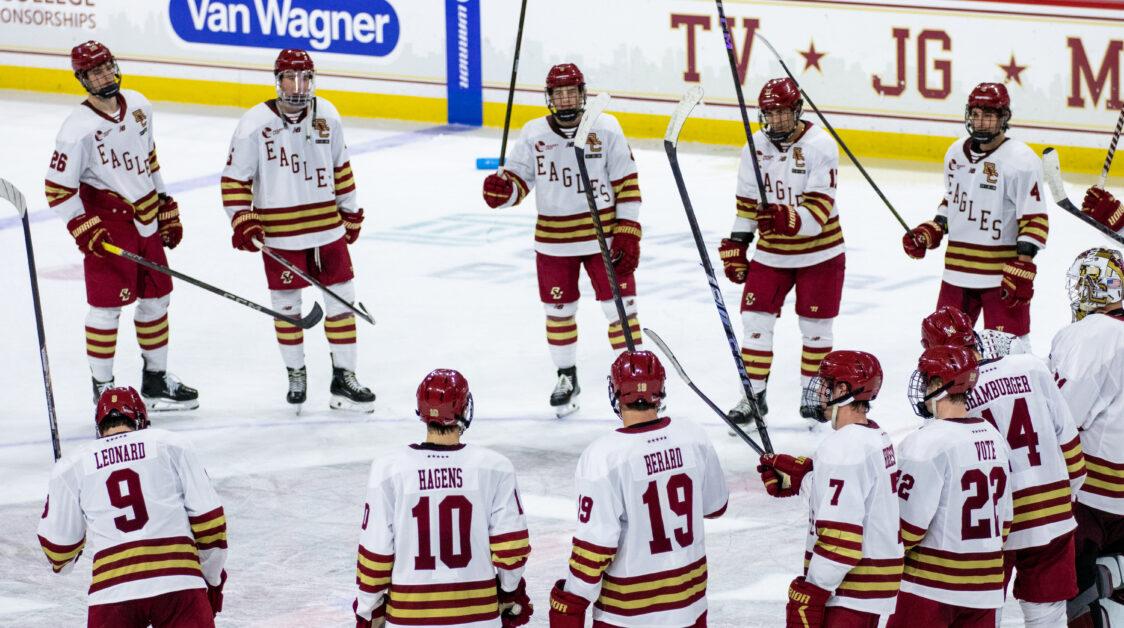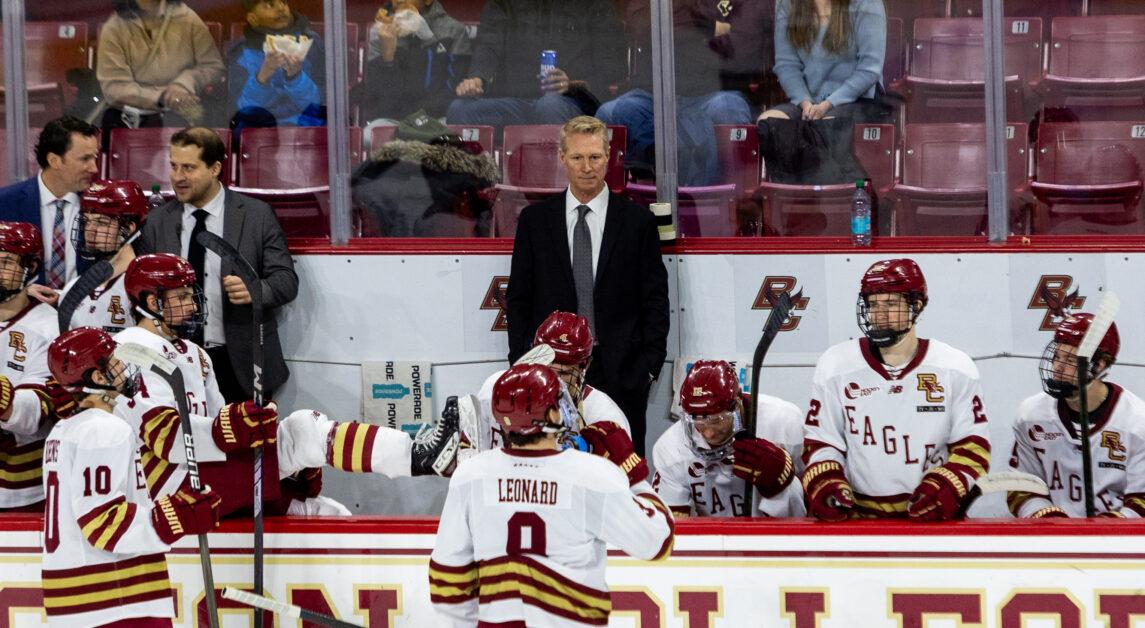Quinnipiac is by no means a bad team, nor will Greg Brown and co. look back at this loss and shake their heads at the end of the season.
But an even-strength score of 4–1 for then-No. 6 Boston College men’s hockey in Friday’s home opener is certainly noteworthy.
At the same time, that means the power-play unit—which featured some new faces—got off to a hot start.
So, let’s start there.
The Silver Linings
The Eagles posted a success rate of 17.6 percent on the power play last season—Hockey East’s third worst—pairing that with Hockey East’s best penalty-kill percentage at 89.8.
Special teams never were a concern, especially with a team as top-heavy as BC, where the power-play unit is absolutely loaded with talent.
It was a bright spot to see that not only were two goals scored on the man-up advantage, but one of those scores included a brand new transfer.
Ryan Conmy, former New Hampshire first liner and Los Angeles Kings draft pick, was the second Eagle of the game to find the back of the net. With Teddy Stiga’s first-period power-play goal and three killed penalties, at least the special teams’ production was something for Eagles fans to be happy about, because the final score certainly did not provide that.
“I wouldn’t say the power play looked lethal, but when you get two great shots, that’s how it is,” Brown said. “Sometimes you play great, you don’t get a goal. Sometimes you slap it around and you get one shot, and it goes in.”
It would have been preferable if the firepower the Eagles brought out to kick off the third period was present the whole game—a quick goal cut Quinnipiac’s lead in half, and the physicality looked like typical BC hockey.
There were sparks, but they simply didn’t last long enough. Brown assured fans not to worry, emphasizing, “It just looked like a first game.”
That could be an indication of line jumbling, a path Brown has regularly taken in his BC tenure.
Nothing Is Set in Stone
In a surprising midseason move, Stiga replaced Ryan Leonard on a line with James Hagens and Gabe Perreault. Brown described the top two lines as “fluent,” meaning neither technically had the title of “first line.”
This stir was to even out the lines so they wouldn’t be terribly top-heavy—the question is: Will that same concern appear with this year’s definitive top line of Stiga, Hagens, and Conmy?
The top line featured two players with a goal, but they didn’t exactly have a goal as a cohesive unit, as both Stiga’s and Conmy’s goals came on the power play.
“[The first line] had glimpses, but early on, felt like they were trying to do a little too much,” Brown said. “Trying to force some plays that weren’t really there because Quinnipiac had numbers back.”
I heavily dislike those who overreact after one game, so I’m not suggesting flipping things completely upside down. This is only a heads-up that if the Stiga-Hagens duo is split up down the line, do not be surprised.
But there is one change to the lines that could be made earlier than that: I would love to see Dean Letourneau center Oskar Jellvik and Andre Gasseau.
We all know he’s a good enough player—it’s a matter of pairing Letourneau with the playmaker types where he can create his own space and pick up speed, use his rifle of a shot to his advantage, and gain back his confidence.
I’m all for freshman Will Moore on the second line so he can be nurtured under experienced wingers, but no one can deny it’d also be interesting to see a freshman line of Gavin Cornforth, Moore, and Landan Resendes.
This hypothetical would equal a third line of Brady Berard centered between Jake Sondreal and Will Vote. This grit-and-grind pairing would squeeze perfectly between the top two offensive-heavy lines and be fluent with the freshman line that can be an unexpected spark plug when given their chance. Plus, the chemistry between the young guns can begin brewing if paired sooner rather than later.
In all fairness, the blame can’t be entirely put on a poor offensive performance—you can’t expect five goals from them night in and night out.
Dear Jacob Fowler, You Will Be Missed
Jan Korec had two starts last season—one versus the then-No. 8 team in the country, and the other versus then-No. 11 Providence. He posted a .962 save percentage and allowed two goals.
“He’s been very assertive this whole fall, really taking control and command of his net,” Brown said. “We know we’ll get good goaltending from Jan going forward.”
Quinnipiac—again, a very good team that is better than the then-No. 13 ranking indicated—peppered him with 30 shots on goal, while BC’s offense provided its Slovakian goaltender with half of that.
It was an unfortunate sight to see him struggle against the Bobcats, as he surrendered double the goals he had in last year’s starts.
The problem is, we’re spoiled. BC had the fewest goals surrendered and the best save percentage in all of Hockey East last season—all thanks to the Hobey Baker candidate that stood between the pipes.
There was probably one, maybe two, Korec would like to have back, but the defense clearly, and surprisingly, struggled.
With how many returning defensemen the Eagles feature this year, more pressure is on them than the first-year starting goalie.
Between the defensive unit and the forwards breaking out, there was too much one-versus-all hockey, allowing the Bobcats to spend much more time in their offensive zone than they should have.
I expect Korec to improve over time, so it’s definitely not a primary concern, but rather a call for this team to trust its capabilities and, more importantly, trust each other.

